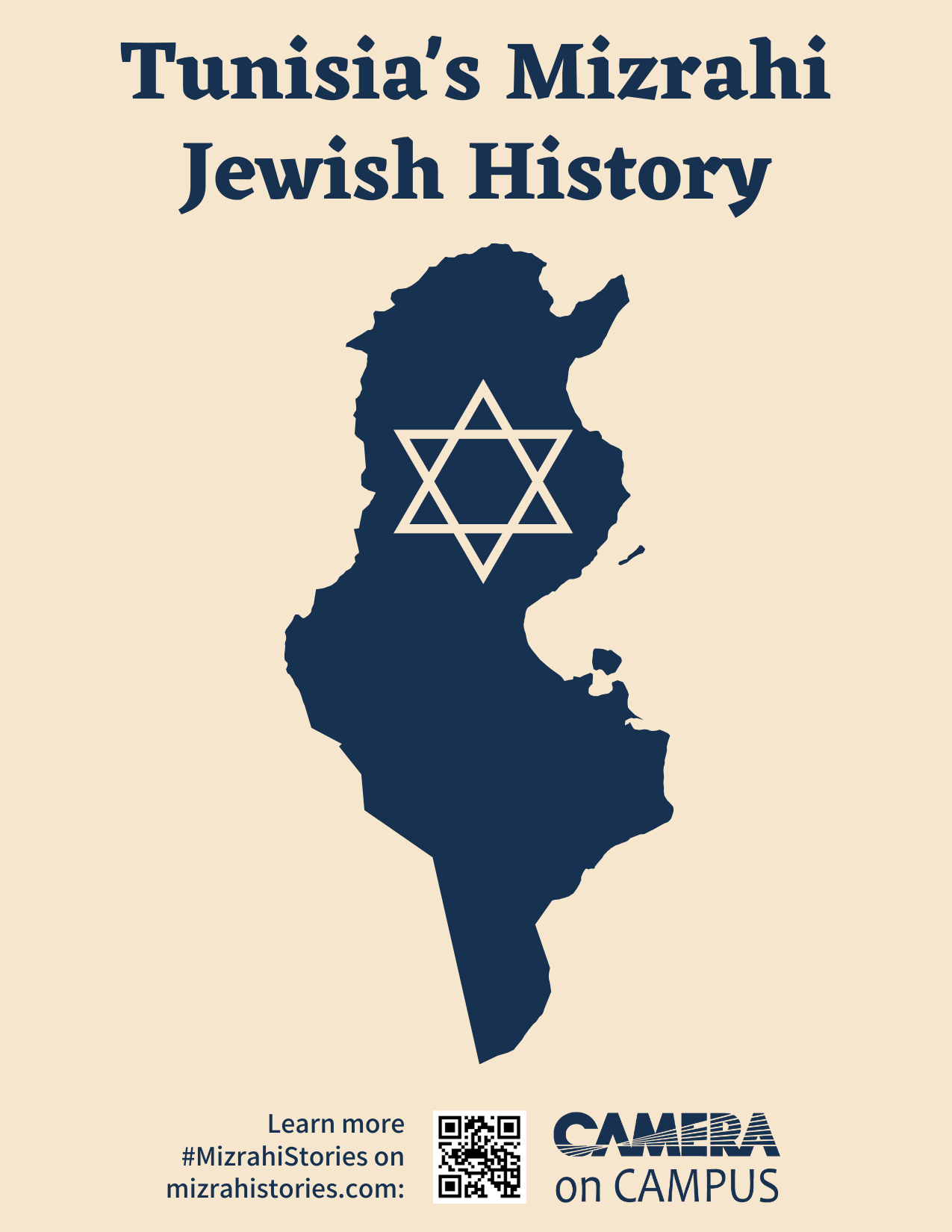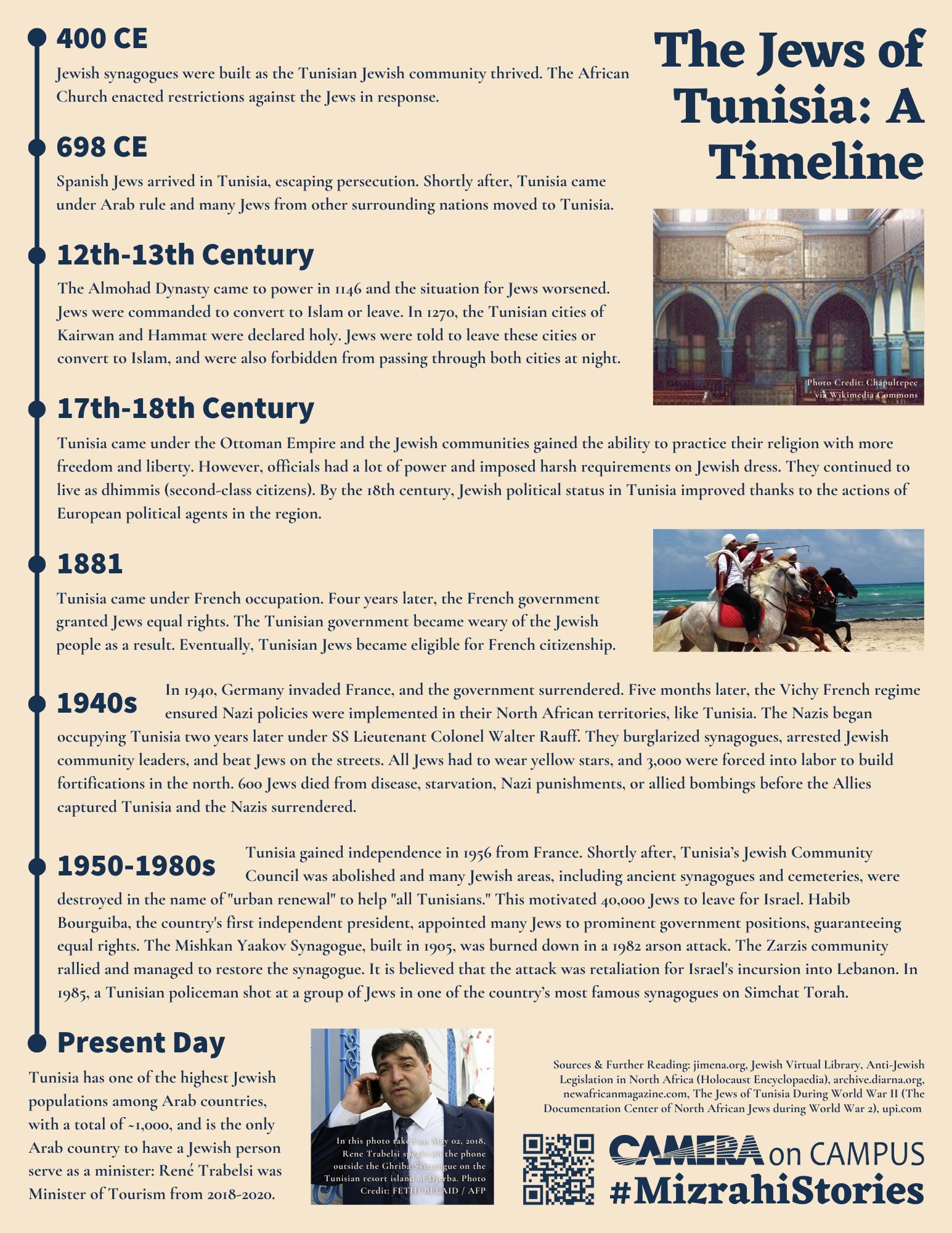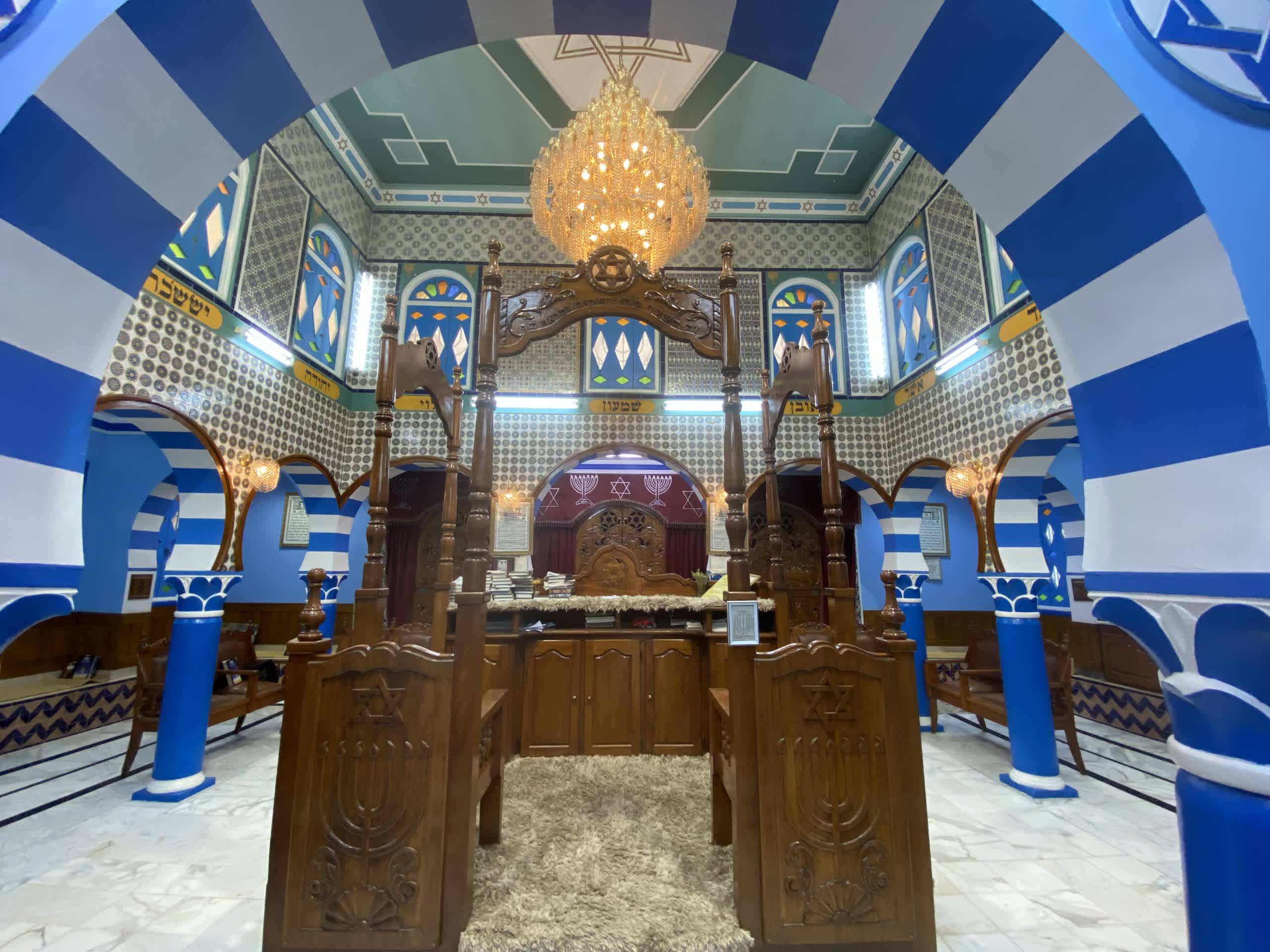The Last Remnant of Arabic Jewry: My Recent Trip to Djerba
The tiny island of Djerba remains the largest outpost of Arabic-speaking Jews today. Found off the coast of Tunisia, Djerba boasts a small but steady Jewish population of around 1,200 people. On the surface, a description of Djerba might resemble what one might see on a present-day tour of other Sephardic countries like Morocco. However, after visiting Djerba with my father this past June, I discovered that Djerba is not merely a unique side of Sephardic Jewish history or the artifacts of a lost community. In fact, Djerba is a thriving community infused with youth and culture, effectively serving as a window into the otherwise forgotten group of Arabic-speaking Jews.
While massive populations of Jews once inhabited the regions of North Africa and Arabia, in the twentieth century, following persecution in the wake of events like the establishment of the State of Israel in 1948, many of them were forced to flee to countries like Israel, the United States and France. Despite this mass emigration, the Djerba community has successfully maintained its 2,000-year-old community, its rich Sephardic and Tunisian culture and its fusion of tradition and modernity.
Aside from its remarkable endurance, the Djerbian Jewish community is distinct in a multitude of ways, even from the communities of nearby North African countries and mainland Tunisia. This unique nature manifests itself most clearly within the island’s minhagim. For example, while Ashkenazic Jews outside of Israel only recite Birkat Kohanim on holidays and Sephardim and Israelis perform it every day, Djerbian Jews say it every Shabbat. Additionally, the person taking the Torah out of the Aron removes his shoes, and in the great El Ghriba shul, the island’s oldest shul and where tourists from all over the world come to visit, the practice is to take off one’s shoes before entering the sanctuary. Djerba is also the only place in the world where the shofar is blown before Shabbat, notifying the residents to stop working. Interestingly, except for when they are eating or davening, most Djerbian Jews do not wear a kippah outside of the Jewish area, despite all of them being Shomer Shabbat (observant of the Sabbath), most going to minyan and many learning Torah regularly. While some people may have heard of Djerba for its famed city of Kohanim, today, only a few families of Kohanim remain, and remarkably, there is not a single Levi on the entire island.
What I found most interesting is the community’s simultaneous adaptation to modernity while in some areas holding strong to the practices of its ancestors. On the one hand, one might assume that if most people have smartphones that the same acceptance of modernity would apply to the educational system as well. However, most boys in the cheders were not learning any secular studies. On the other hand, many yeshivas in the U.S. and Europe that do not place an emphasis on secular studies do not teach Hebrew well either; however, the schools in Djerba teach everyone to speak modern Hebrew fluently, which made it very easy for us to make conversation with everyone.
The practices regarding the interactions between men and women present another fascinating aspect of the community. While the Djerbian custom of unmarried men and women not speaking to each other and arranged shidduchim is found to various degrees in many other contemporary communities, the custom of couples not interacting at all within a one or two-year engagement period is not found even in the most Hasidic communities of Brooklyn. In general, Djerbian women do not go to shul, and many of the shuls do not have women’s sections. Ironically, though, the Djerbian women are more modern than one might have anticipated. For instance, some women spoke to us at Shabbat meals, and the girls learn English and other secular studies in school.
Also of significance is the Djerbian Jews’ nuanced perspective on the State of Israel. First, despite many having family members in Israel and all supporting the existence of a Jewish state, Djerbian Jews discourage those on the island from making aliyah. While everyone in the Djerba community keeps Shabbat and has a strong connection to Judaism, the same cannot be said about those who make aliyah. The Djerbian perspective on Zionism is a friendly reminder that Israel, with all of its virtues, does not absolutely guarantee religious observance for all its inhabitants. On the other hand, although Jews in other countries maintain a more reserved public support for Israel, the same cannot be said about the Jews of Djerba. Not only do they say Mi She’beirachs for the Israeli government and army, but when Yom Haatzmaut comes around, they do not say Tachanun the days before and after in addition to on the holiday itself. Therefore, in spite of no Tunisian diplomatic relations with Israel, the Tunisian President proclaiming that any ties with Israel is “high treason” and Israelis being forbidden to travel to the country except for during the Lag Baomer season, the Jews of the island still preserve a pro-Israel sentiment, albeit in a manner which is slightly complex.
Similarly, notwithstanding cases of trouble in the past, the Jews and Muslims are very friendly with each other, and throughout my trip, I never felt unsafe. One day our tour guide, Adir, took us to the local shuk where we ate at a kosher restaurant, saw his jewelry store and met his Muslim co-worker, Farhid. There are a few armored vehicles and soldiers standing by the entrance to the Jewish neighborhood, and when thousands of Jews from all over the world flock to the island for the annual Lag Baomer festivities, the government provides heavy security.
My favorite part of the trip was undoubtedly Shabbat. We ate at an older gentleman’s house for Friday night dinner; the house was very small but decorated with the azure blue found throughout the island and all of the fourteen shuls. We had a beautiful meal, in Hebrew, and spoke with our host about his relationship with Rav Meir Mazuz, a well-known Tunisian Rosh Yeshiva in Bnei Brak. For dessert, we cracked open some unripe green almonds and had some abnormally shaped peaches.
Throughout Shabbat, most people walk in circles around the small Jewish neighborhood and talk with each other. In the early afternoon, we sat in a Beit Midrash adjacent to one of the shuls and asked the nearby chacham (sage) various questions about Djerbian minhagim. At 4:15 in the afternoon, we finally sat down for Shabbat lunch and enjoyed talking to Adir and his two brothers, some of the few English speakers in the community. The food and dips were spicy but not too spicy, and the best dish was the chamin, Sephardic cholent made in the communal oven. Spending Shabbat in Djerba was truly eye-opening for me; I don’t believe I could say that I really experienced the community without it.
There are so many more customs and interesting facts about this community, and very little has been published in English that successfully depicts the unique nature of the community. However, even a thorough article cannot really illustrate the Djerbian community, and it really takes being there in person to understand the lives of the Jews on this small island. While many Sephardim do not fall into the neat categories of religious levels and community affiliations often used by Ashkenazic Jews, this is especially true of Djerbians. The community of Jews in Djerba is like no other, and I cannot wait until I return.




